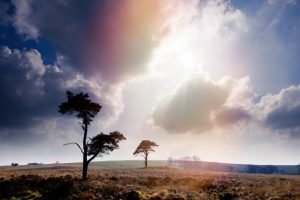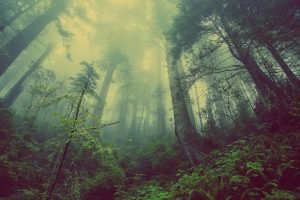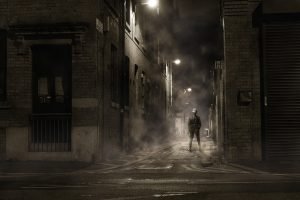Photography is an art, so infusing the right amount of drama into your images is just the master touch that will take your photos from attractive to amazing. Dramatic images are exhilarating and fire up the imagination of your audience.
 Landscape photography shows spaces within the world, sometimes vast and unending, but other times microscopic. Landscape photographs typically capture the presence of nature but can also focus on man-made features or disturbances of landscapes, so following techniques are used to photo shoot the dramatic effects of landscape.
Landscape photography shows spaces within the world, sometimes vast and unending, but other times microscopic. Landscape photographs typically capture the presence of nature but can also focus on man-made features or disturbances of landscapes, so following techniques are used to photo shoot the dramatic effects of landscape.


The Use of Silhouette
What are silhouettes if not mysterious? Anything that’s mysterious and gives off a sense of the evocative will add drama in an instant to your photography, which is why silhouette are such a smart technique to use.
The simple-though-effective outline of a familiar shape – whether that’s a person or an object – plays both sides of the field. It’s mysterious enough because the viewer doesn’t know the exact details, but he can generally understand what the element is in your picture.

The Sky… Above you
It’s like the sky is hiding in plain sight sometimes, as far as photographers are concerned. Overlooked a lot of the time, dark skies, if you’re shooting outdoors, are the perfect complement to your images when you want to add touches of the dramatic and even epic.
Yes, you’ll have to prep and take rain gear with you and protect your camera, but nothing adds drama to landscapes like brooding skies that look like they’re about to start raining. Even if your landscape is very usual, such as a plain field or even a park, a dark sky above infuses your shot with drama immediately.
Pro tip: If your dark sky doesn’t quite look as dramatic when you’ve taken your shots, you can always use the post-processing phase to darken your pictures a notch and give it that extra bit of drama.

Taking Away the Light
This expands on the tip above to use dark skies to bring drama to your shots. You can take this darkening and apply it to most any situation, even indoors, if you just take away the light in your images.
The more you take away the light, the more you get shadows, which add drama. Psychologically, it deprives the audience of as much as they’d like to see, making it a great technique to use.
Of course, you can’t take away the light totally, or else you’d just have a black frame. It’s actually the contrast with dark and light that creates the greatest drama.
To succeed at this, consider your situation
If you’re shooting at night or in any low-light situation, just rely on some artificial sources of light like lamps and street lights to produce contrasting light and dark (with more darkness, naturally).
Also, you don’t always have to take the light away to create this sense of increased darkness. Sometimes, basic techniques like the contrast between white and black (more black) create the same, dramatic effect.

Striking Colours
Believe it or not, striking colours can greatly affect an image’s sense of drama. Vibrant colors may not exactly be what you’re thinking of when you think of dramatic, but they have their place.
The thing is that colors set the emotional backdrop for your audience. As such, being very selective about the colors that make it into your final shot can be of great help when trying to make a shot more dramatic.
For instance, if you’re shooting a forest of trees with the light just slightly filtering through the dense layer of leaves and tree trunks, take the shot when the natural light is strongest to really highlight the green colors of the forest. Should there also be a dirt trail or path – as a way to use leading lines for a focal point – it helps if it’s a bold, brown color as well.
Drama doesn’t just have to be about making your picture darker for extra mood; it can also be dramatic when you have vivid colors to make an impact on your audience.

The Thicker, The Fog, The Better
Okay, we’re back to using some form of gloom element to create drama in your images! Fog will never let you down in this regard since fog, via its use in movies and literary works to set the tone, is naturally associated with the dramatic.
The beauty of fog is how excellent it is at obscuring objects farther away from the lens, thereby creating mystery and a sense of the unknown, both great ingredients for anything dramatic.
Fog is also highly useful in establishing a superior sense of depth in your images. Having your subject slowly fade out toward the distance is a master touch.
Of course, shooting fog may not be an option for you very easily, depending on where in the country or world you live. In that case, it helps to always have your camera and any gear you need at the ready and close to your front door, so you can take advantage of great fog shooting conditions at a moment’s notice.
Whenever you use something psychological – such as the fear of the unknown when fog shrouds certain barely visible objects in the distance of your photos – you are creating a high and even urgent sense of drama.

Here, Drama is Useful
Photography is probably one of the few areas in life in which creating more drama is actually a good and beneficial thing. As you can see, there are numerous techniques you can depend on to incorporate more of the dramatic in your shots.
Adding drama to photography is always a win since it persuades your audience to look at your shots with added interest and attention. It’s because they’re trying to make sense of what’s either mysterious or strongly implied by the reduction of light.
As a photographer, you want to give your audience a reason to stick around and do more than just give your images a passing glance. Drama done right in your images accomplishes this to a wonderful effect.